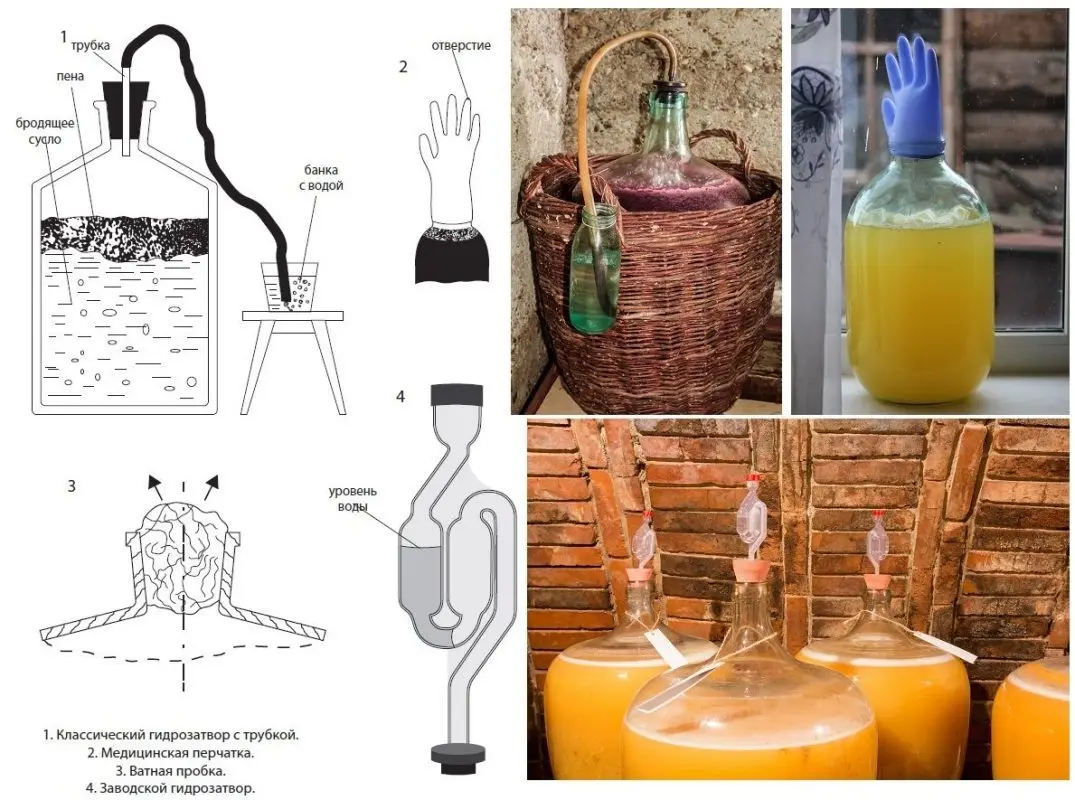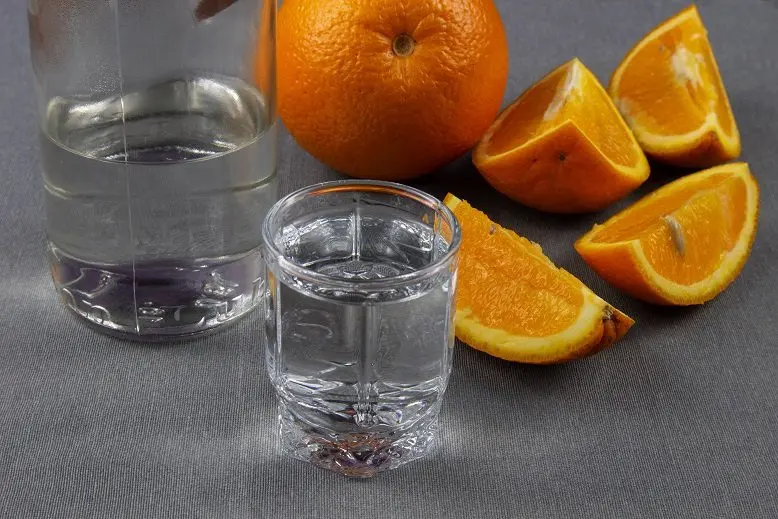Moonshine from oranges is remembered for its persistent citrus aroma, mild taste and light candied aftertaste. When aging in bottles, the smell of the drink changes – light vanilla tones appear. A good option for processing substandard fruits that will soon deteriorate. The intensity of the citrus note can be increased or decreased during the preparation of orange mash.
Oranges of any variety without rot, spoilage and mold will do. All problematic parts of the fruit should be cut out before the start of laying the ingredients, and it is better not to use moldy oranges at all.
Theory
Orange juice contains 8-10% sugar, and to obtain 1 liter of juice, about 2 kg of fruit will be required. This means that the maximum theoretical yield of forty-degree moonshine from 1 kg of oranges is 60 ml, in practice the amount will be 10-15% lower.
You can increase the yield with sugar (1 kg additionally gives about 1,1 liters), but the main thing here is not to overdo it so that characteristic citrus tones remain. The best option is more than 1-2 kg of sugar per 10 kg of feedstock.
For brewing, it is optimal to use wine yeast (preferably for white wines) or home-made sourdough from raisins, then the taste of moonshine will be softer and without obvious alcohol tones. The lack of wine yeast and sourdough in long-term fermentation – up to 50 days. On alcohol or baker’s yeast, orange mash will win back in 4-10 days, but the finished moonshine will not be so fragrant and soft.
Ingredients:
- oranges – 10 kg;
- sugar – 1-2 kg (optional);
- water – 4 liters per 1 kg of sugar;
- yeast – for 10 liters of wine must, alcohol, sourdough, 100 g of pressed or 20 g of dry bakery (choose only one type of yeast).
Orange mash recipe
1. Rinse oranges in warm water and wipe dry to remove pathogenic microorganisms from the surface that can accidentally infect the must, then remove the peel from the fruit. The more white pulp that is removed, the less risk that orange moonshine will turn out bitter. Grind peeled oranges with a meat grinder or in any other way.
An alternative and more preferred option is to squeeze the juice with a juicer. Then the pulp will definitely not give bitterness.
2. Place the crushed pulp (or orange juice) in a fermentation container.
3. Dissolve sugar in water (can be preheated to 35-45 °C). Mix the resulting syrup with orange must. Fill the fermentation tank to a maximum of 75% of the volume to leave room for foam and carbon dioxide.
4. Arrange the yeast according to the instructions on the bag and add it to the wort. Close the container with a water seal of any design (you can put it under a medical glove by piercing one finger with a needle to release the gas).

5. Transfer the orange mash to a dark room with a stable temperature of 20-28 °C. Leave until the end of fermentation. Depending on the selected yeast, fermentation will last 4-50 days. Readiness can be judged by the absence of gas from the water seal (deflated glove), the slightly bitter taste of mash without sweetness, and a layer of sediment at the bottom.
Getting moonshine from oranges
6. Braga from orange juice is simply drained without sediment into a distillation cube, and the mash with pulp is pre-strained through 1-2 layers of gauze and squeezed dry.
7. Make the first distillation at maximum speed, select moonshine until the fortress in the stream drops below 30%.
8. Measure the strength of the resulting product, then calculate the amount of pure alcohol (multiply the volume in liters by the strength in percent and divide by 100).
9. Dilute moonshine with water up to 18-20% vol. (for classical distillers). Make a second run. The first 18-20% of the yield from the amount of pure alcohol should be collected separately, this is a harmful “head” fraction, you can’t drink it.
To enhance the orange flavor during the second distillation, you can hang it in a cube (in a gauze bag) or add orange peels or zest (peeled peel without white pulp) to a dryer. Zest is preferable because it does not give bitterness, but it is important to observe the measure here so that the aroma does not become too strong and intrusive. For 5 liters of raw alcohol, a peel from half an average orange is enough, maybe even less.
10. Select the target product (“body”) until the strength in the jet falls below 45%. Then you can finish the distillation or collect the remaining distillate (“tails”) separately.
11. Dilute the “body” of moonshine from oranges with water to the desired drinking strength (usually 40-45% vol.), Pour into glass bottles or jars and close tightly. Before tasting, leave for at least 3-4 days in a cool place to stabilize the taste after mixing with water.










